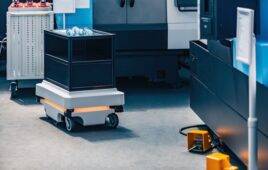Last year, dozens of major oil companies and oil-producing nations agreed to end the routine flaring of natural gas from wells by 2030. This burning off of uncaptured methane in addition to simply letting it escape into the air — a process called venting — releases pollutants and the greenhouse gases carbon dioxide and methane into the atmosphere. Now in ACS’ journal Energy & Fuels, researchers report a strategy that could help producers work toward this goal.
Although the percentage of gas from oil production that is vented or burned off rather than captured has decreased over the past few years, the total volume is still considerable. Operations in the Northwest’s Bakken Formation, one of the largest oil reservoirs in the U.S., flares and vents an estimated 250 million standard cubic feet of natural gas per day. Oil production in Texas’ Eagle Ford formation flares and vents nearly 100 million standard cubic feet per day. Environmentalists and others have called for oil companies to capture the gas, which could be used to generate power or recover even more oil, rather than burn it off or release it into the atmosphere. But the infrastructure to do this hasn’t caught up with the rapid growth of oil production. Milind Deo and colleagues set out to design a better facility for handling gas associated with oil operations.
The researchers investigated the application of staged separation, using a high-pressure step followed by a lower-pressure one, and demonstrated that this could reduce the rates of venting and flaring by up to 70 percent. The concept of staged separation has been used in production from conventional oil reservoirs, but has not been widely applied in the production of liquids from shale formations. Upfront costs would be higher than separating oil and gas in one step, but in the long run, the cuts in waste gas would result in a more sustainable process, the researchers say.
Filed Under: Industrial automation




